Fennec foxes are small, desert-dwelling canids that inhabit the arid regions of North Africa and parts of the Middle East. These adorable creatures have garnered much attention due to their distinctive physical features, including large ears and a fluffy tail. Despite being considered as one of the smallest species in the family Canidae, fennec foxes possess remarkable adaptations that enable them to survive in harsh environments.
However, fennec foxes are not free from threats in their natural habitat. As with most animals, they have predators that pose a significant risk to their survival. Understanding the predators of fennec fox is crucial for conservation efforts aimed at preserving these fascinating animals’ populations.
This article aims to explore some of the common predators of fennec foxes and highlight how these animals have adapted to evade predation over time.
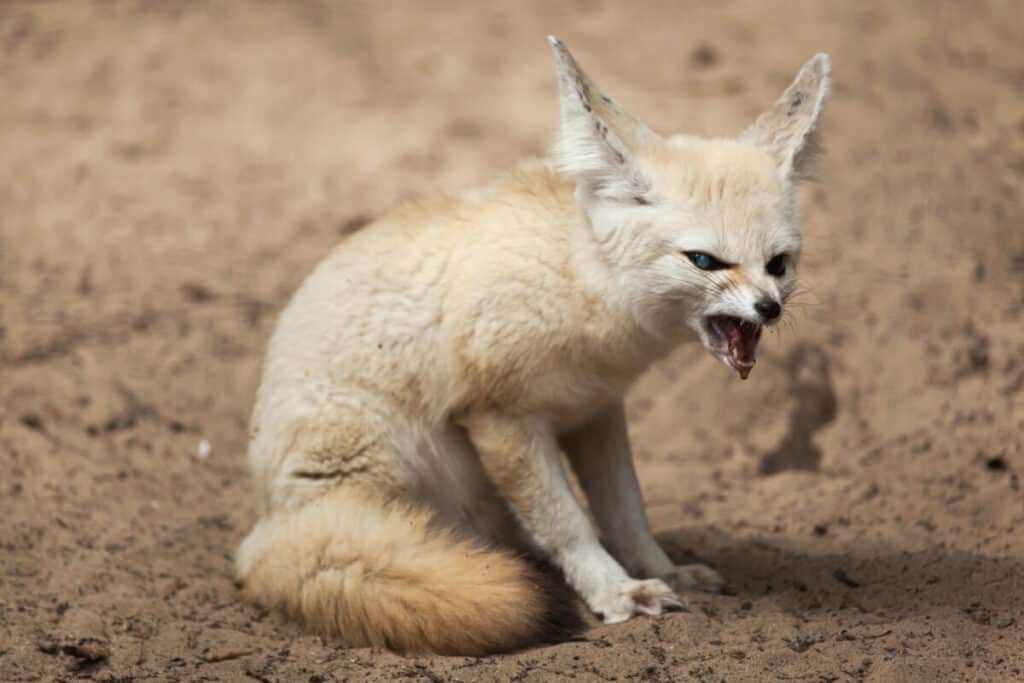
The Importance Of Understanding Fennec Fox Predators
Understanding adaptations and ecological role of the fennec fox is important in identifying its predators.
Fennec foxes are small, nocturnal animals that inhabit arid deserts in North Africa and parts of the Middle East. These creatures have adapted to their environment, which includes extreme heat during the day and cold temperatures at night by having large ears for dissipating heat and a thick fur coat for insulation.
Fennec foxes play an essential ecological role in their ecosystem as they primarily consume insects but also eat small mammals, reptiles, and birds. They help control pest populations like locusts and rodents while being preyed upon themselves by other larger carnivores such as eagles, jackals, caracals, hyenas, and humans who hunt them for sport or fur trade.
By understanding the importance of these predators’ roles in controlling fennec fox population sizes, we can better appreciate the intricate balance of nature’s biodiversity.
Natural Predators In The Wild
Understanding ecosystem dynamics is essential in the study of fennec foxes. These animals, while considered as apex predators themselves, still fall prey to other carnivores that share their habitat. Fennec foxes are naturally small and agile creatures with a keen sense of hearing and smell, making them adept at evading predators. However, there are still instances when they become vulnerable targets for larger animals.
Natural predators of fennec foxes include eagles, jackals, hyenas, and caracals. Eagles primarily feed on young or weak fennec foxes who cannot outrun the bird’s powerful talons. Jackals hunt adult fennecs by pursuing them into their dens or ambushing them during daytime activities such as foraging. Hyenas use their superior strength to overpower these small canids while caracals rely on stealthy stalking tactics to catch their prey off-guard.
Predation prevention strategies typically revolve around camouflage and social behavior adaptations such as living in burrows with multiple entrances/exits or forming alliances with other species to increase protection against common threats.

Eagles
Eagles, particularly large species like golden eagles or steppe eagles, are powerful birds of prey that can pose a threat to fennec foxes. With their keen eyesight and impressive flying abilities, eagles can spot and pursue fennec foxes in the open desert landscapes.
Once they identify a fennec fox, eagles will swoop down from above, using their sharp talons to grab and immobilize the fox. They may carry the fox to a nearby perch or attempt to kill it on the ground. Fennec foxes have limited defensive options against aerial attacks, and the swift and precise strikes of eagles make them formidable predators.
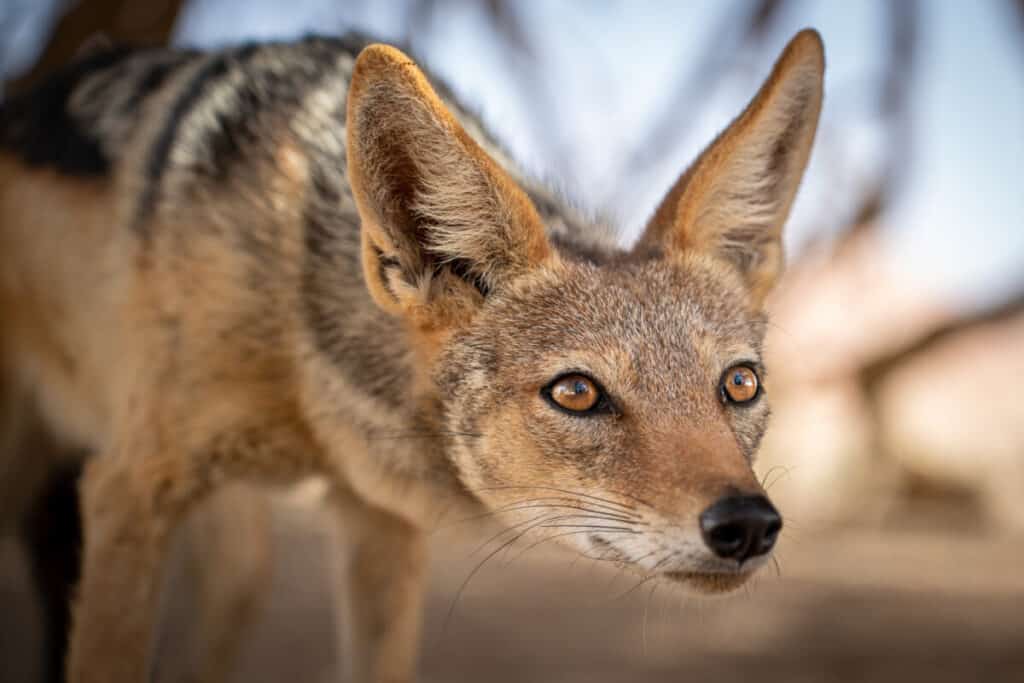
Jackals
Jackals, such as the black-backed jackal or the side-striped jackal, are medium-sized carnivores that overlap with fennec foxes in their habitat range. Jackals are opportunistic predators and scavengers, capable of preying on small mammals like fennec foxes.
They have keen senses and adaptability, which allows them to track and hunt down fennec foxes, particularly in times of resource scarcity. Jackals may chase fennec foxes through the desert, using their agility and group dynamics to corner and subdue the fox. Once caught, jackals will deliver powerful bites to incapacitate the fennec fox and consume it as a food source.
Foxes’ Natural Foes: Unmasking Their Predators
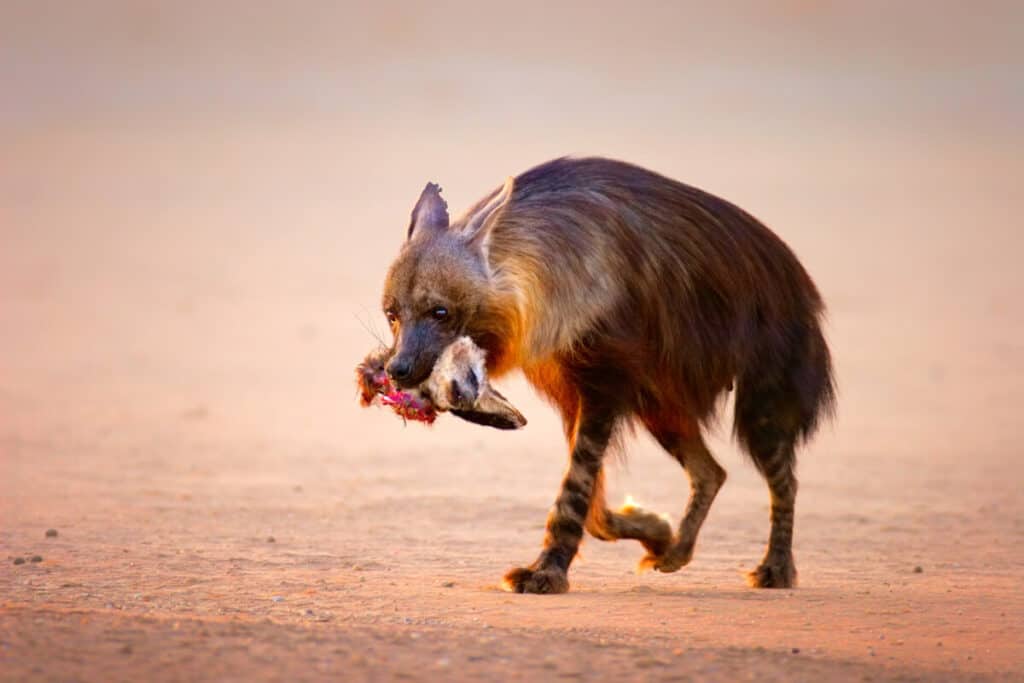
Hyenas
While hyenas are typically associated with savannah ecosystems, the striped hyena can be found in desert regions and may come into contact with fennec foxes. Striped hyenas are primarily scavengers but are capable hunters as well.
When encountering fennec foxes, hyenas may engage in aggressive territorial behavior or, in rare cases, actively pursue and prey upon them. Hyenas have strong jaws and the ability to bring down small prey. They may use their superior size and strength to overpower a fennec fox and, if successful, will consume it or bring it back to their den for further feeding.
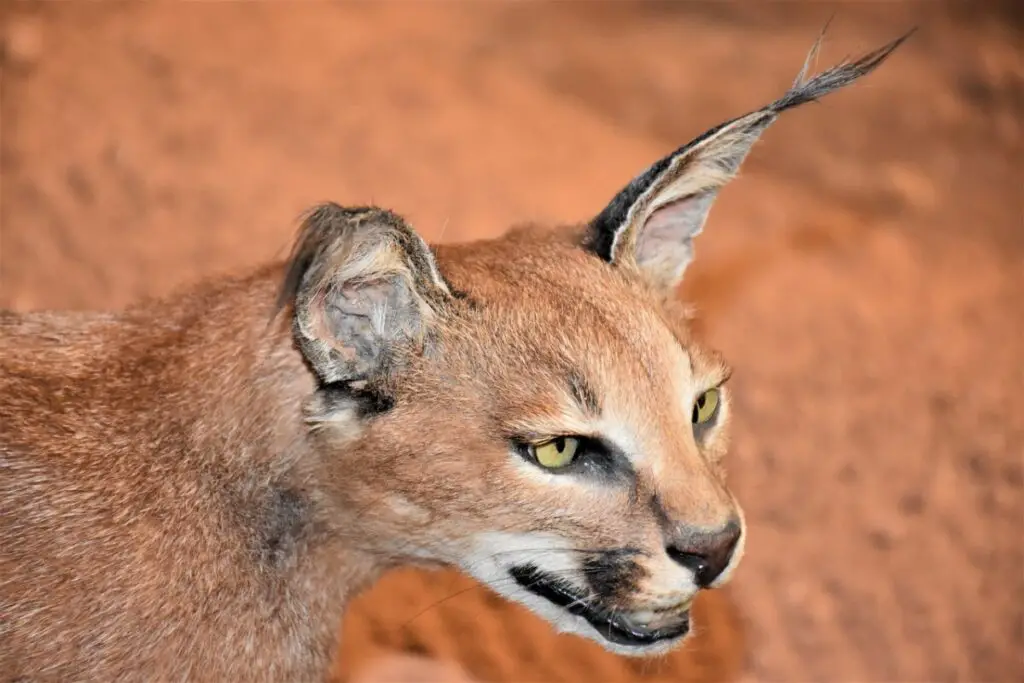
Caracals
Caracals are medium-sized wildcats known for their agility and hunting prowess. Although they typically target small to medium-sized prey, fennec foxes may occasionally fall within their hunting range. Caracals are highly skilled jumpers and can pounce on fennec foxes with precision.
With their sharp claws and powerful bites, caracals can quickly subdue a fennec fox. They may deliver a fatal bite to the neck or head, ensuring the fox is incapacitated before consuming it. Fennec foxes rely on their speed and agility to evade predators, but caracals’ stealth and hunting abilities make them a formidable threat.
Adapting To Avoid Predation
Natural predators play a crucial role in maintaining the balance of ecosystems, as they control populations of prey species. The fennec fox (Vulpes zerda) is no exception to this rule and has several natural predators that pose threats to their survival in the wild. Among these are large birds of prey such as eagles, hawks, and owls that hunt young or weakened individuals. Other potential predators include jackals, caracals, hyenas, and even snakes.
To avoid being hunted by these natural predators, the fennec fox exhibits various behavioral adaptations. One of the most notable examples is their burrowing behavior. These small desert foxes dig complex underground dens that provide shelter from both extreme temperatures and predators. They also have keen senses that allow them to detect approaching danger from great distances and respond accordingly.
For example, when sensing danger, fennec foxes may freeze in place or take cover until it passes. Predator avoidance is an essential aspect of the fennec fox’s life in the wild. Their unique set of behavioral adaptations enables them to survive in harsh desert environments where food resources are scarce and threats abound.
By studying these fascinating animals’ behaviors further, we can gain valuable insights into how wildlife adapts to changing environmental conditions over time.
Competition With Other Desert Species
The fennec fox is not the only species that inhabits desert environments. These areas are home to a variety of other animals, some of which may compete with the fennec fox for resources such as food and water. The competition for these limited resources can create challenges for all species in the area.
Competition for food is one of the most significant factors affecting wildlife populations in desert habitats. In addition to competing with other carnivores like coyotes and jackals, the fennec fox must also contend with herbivorous mammals that occupy similar ecological niches, such as gerbils and jerboas. Natural habitat modification, including human activity such as agriculture or urbanization, can exacerbate this competition by altering the availability of resources over time.
The Impact Of Human Activity On Fennec Fox Populations
Human intervention has had a significant impact on the fennec fox population. The gradual expansion of human settlements, coupled with increased agricultural activities and infrastructure development, have all contributed to habitat degradation in the Sahara desert where these animals are found.
This destruction of their natural environment has led to decreased food availability, reduced access to water sources, and loss of shelter for the fennec foxes. In recent years, conservation efforts have been put in place to address this problem.
These include habitat restoration programs aimed at increasing vegetation cover and replanting of indigenous plant species that provide food for the fennec foxes. Furthermore, there have been campaigns advocating for responsible land use practices that minimize habitat fragmentation and destruction.
However, much more still needs to be done as the threat posed by human activity continues to loom large over these adorable creatures.
Conservation Efforts And Future Outlook
The impact of human activity on Fennec Fox populations has been significant in recent years. As the demand for fur and pets increased, illegal hunting and trafficking became more rampant. This led to a decline in population numbers due to their slow reproductive rate and low genetic diversity. Additionally, habitat destruction caused by urbanization, farming, and mining activities have reduced the availability of food sources and shelter for these animals.
To ensure the survival of this species, conservation strategies must be implemented. One effective approach is through education campaigns that raise awareness about the importance of preserving ecological balance. These efforts can encourage people to reduce their carbon footprint and support wildlife protection initiatives.
Another strategy is to establish protected areas where fennec foxes can thrive without interference from humans or other predators. Creating partnerships between local communities and conservation organizations, conducting research to better understand the ecology of fennec foxes, and establishing strict laws against poaching and trade of fennec fox products are also crucial steps in conservation efforts.
By implementing these measures, it is possible to restore ecological balance within Fennec Fox habitats while simultaneously supporting sustainable livelihoods for local communities. Ultimately, such actions are necessary not only for the preservation of this unique animal but also for maintaining healthy ecosystems that benefit all living organisms.
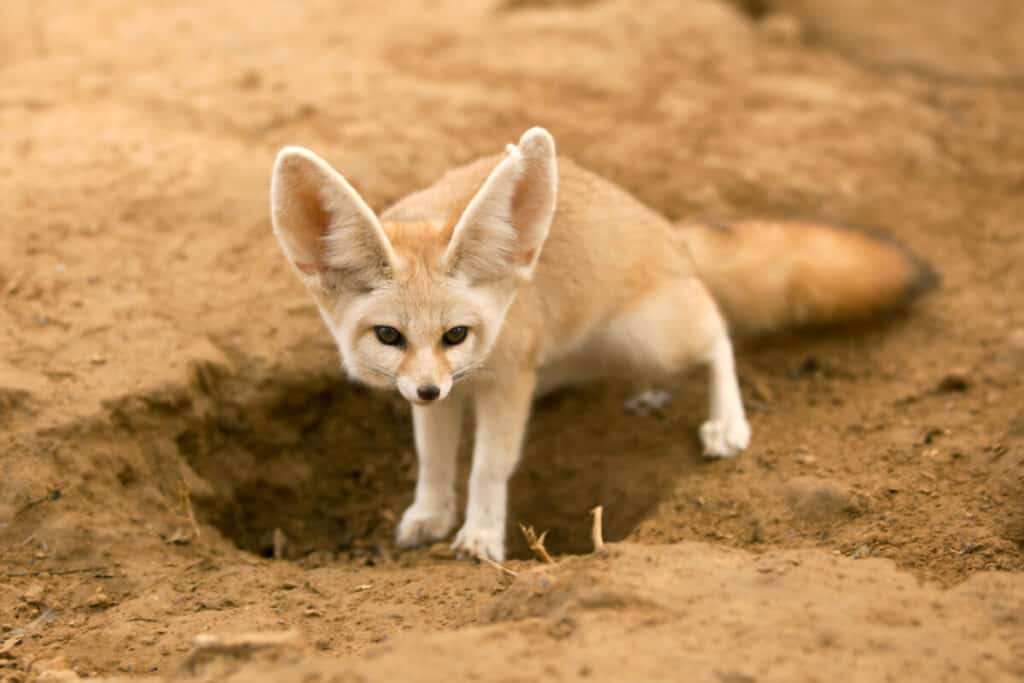
Fascinating Facts About Fennec Foxes
The fennec fox is a small, desert-dwelling animal that has adapted well to its harsh environment. It has several unique physical characteristics that allow it to survive in the hot and dry Sahara Desert.
For example, their large ears help them dissipate heat, and they can hear prey moving underground. Additionally, their thick fur coats protect them from both the extreme temperatures of the desert and predators such as birds of prey.
In addition to its physical adaptations for survival, the fennec fox also exhibits behavioral adaptations. They are primarily nocturnal animals which means that they sleep during the day when temperatures are at their highest and hunt at night when it is cooler.
Moreover, they have developed an efficient way of obtaining water by digging deep into sand dunes where moisture is present despite the arid conditions above ground. These fascinating adaptations have enabled these charming creatures to thrive in one of the harshest environments on earth without having to rely too heavily on external sources of food or water.
Conclusion
Understanding the predators of fennec foxes is crucial to their survival in the wild, as these small desert animals must constantly adapt to avoid becoming prey.
Natural predators include larger mammals such as eagles, jackals, and caracals, while competition with other species for resources also poses a threat.
Human activity has further impacted fennec fox populations through habitat destruction and hunting.
Conservation efforts aim to protect fennec fox habitats and minimize human impact on their ecosystems.
Through education and awareness campaigns, we can promote responsible behavior towards wildlife that will help ensure the future of these fascinating creatures in their natural environment.
By understanding their place in the ecosystem and working to preserve it, we can support the continued existence of this unique desert predator.

